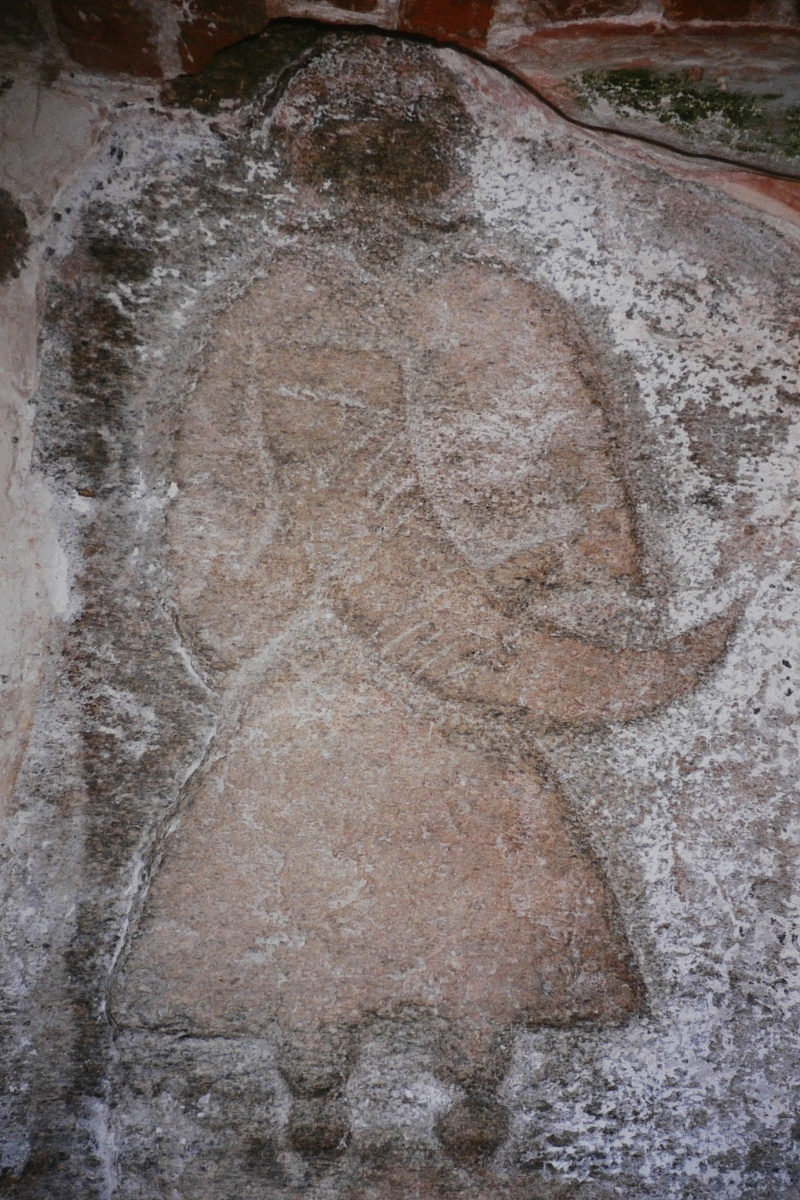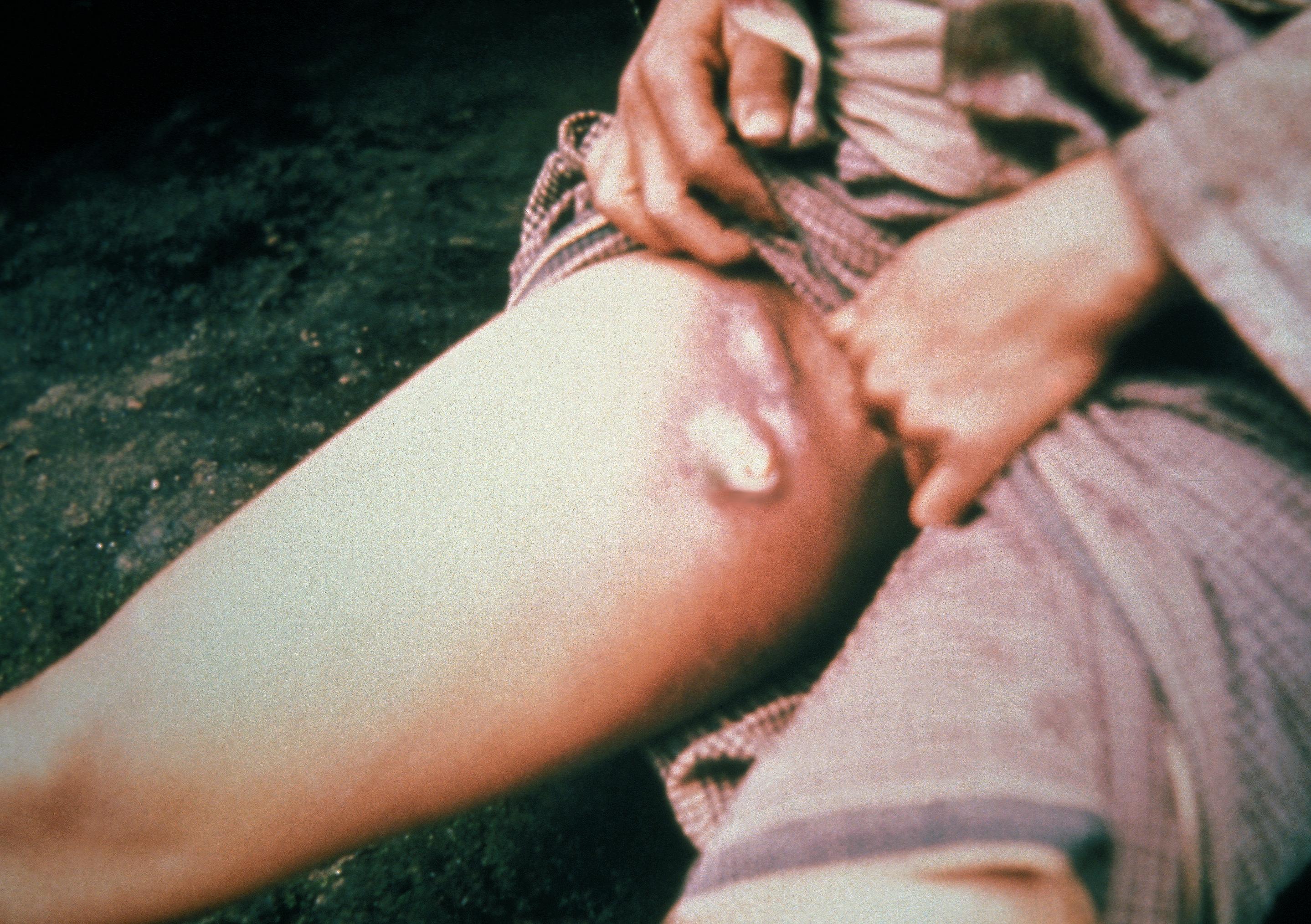|
Likhoradka
Likhoradka (Russian language, Russian: ''Лихорадка'', Serbian language, Serbian: ''Милоснице'' or ''Milosnice'') or tryasavitsa is a female spirit in Slavic mythology. Likhoradka was purported to be able to possess a person's body and cause sickness. In some tales, she is considered a creation of the dark deity Chernobog. Later Russian legends describe 12 Likhoradkas, with individual names associated with special illnesses. In modern Russian, the word likhoradka has obtained the meaning "fever". As a mythological figure, Likhoradka was related to the figure of Chuma (Slavic mythology), Chuma, which in modern Russian is the term for Plague (disease), plague. Likhoradka was sometimes portrayed as a tall woman with disheveled hair, a pale face and a white dress, who brought sickness to people she tried to touch or to kiss. The word likhoradka comes from ancient Russian ''likho'' (harm or bad luck) and ''radet'' which means to endeavor. Sources * See also * Mokosh * ... [...More Info...] [...Related Items...] OR: [Wikipedia] [Google] [Baidu] |
Russian Language
Russian is an East Slavic languages, East Slavic language belonging to the Balto-Slavic languages, Balto-Slavic branch of the Indo-European languages, Indo-European language family. It is one of the four extant East Slavic languages, and is the native language of the Russians. It was the ''de facto'' and ''de jure'' De facto#National languages, official language of the former Soviet Union.1977 Soviet Constitution, Constitution and Fundamental Law of the Union of Soviet Socialist Republics, 1977: Section II, Chapter 6, Article 36 Russian has remained an official language of the Russia, Russian Federation, Belarus, Kazakhstan, Kyrgyzstan, and Tajikistan, and is still commonly used as a lingua franca in Ukraine, Moldova, the Caucasus, Central Asia, and to a lesser extent in the Baltic states and Russian language in Israel, Israel. Russian has over 253 million total speakers worldwide. It is the List of languages by number of speakers in Europe, most spoken native language in Eur ... [...More Info...] [...Related Items...] OR: [Wikipedia] [Google] [Baidu] |
Serbian Language
Serbian (, ) is the standard language, standardized Variety (linguistics)#Standard varieties, variety of the Serbo-Croatian language mainly used by Serbs. It is the official and national language of Serbia, one of the three official languages of Bosnia and Herzegovina and co-official in Montenegro and Kosovo. It is a recognized minority language in Croatia, North Macedonia, Romania, Hungary, Slovakia, and the Czech Republic. Standard Serbian is based on the most widespread dialect of Serbo-Croatian, Shtokavian (more specifically on the dialects of Šumadija–Vojvodina dialect, Šumadija-Vojvodina and Eastern Herzegovinian dialect, Eastern Herzegovina), which is also the basis of Croatian language, standard Croatian, Bosnian language, Bosnian, and Montenegrin language, Montenegrin varieties and therefore the Declaration on the Common Language of Croats, Bosniaks, Serbs, and Montenegrins was issued in 2017. The other dialect spoken by Serbs is Torlakian dialect, Torlakian in south ... [...More Info...] [...Related Items...] OR: [Wikipedia] [Google] [Baidu] |
Slavic Mythology
Slavic paganism, Slavic mythology, or Slavic religion refer to the Religion, religious beliefs, myths, and ritual practices of the Slavs before Christianisation of the Slavs, Christianisation, which occurred at various stages between the 8th and the 13th century. The South Slavs, who likely settled in the Balkans during the 6th–7th centuries AD, bordering with the Byzantine Empire to the south, came under the sphere of influence of Eastern Christianity relatively early, beginning with the creation of writing systems for Slavic languages (first Glagolitic, and then Cyrillic script) in 855 by the brothers Saints Cyril and Methodius and the adoption of Christianity in First Bulgarian Empire, Bulgaria in 864 and 863 in Great Moravia. The East Slavs followed with the official adoption in 988 by Vladimir the Great of Kievan Rus'. The process of Christianising the West Slavs was more gradual and complicated compared to their eastern counterparts. The Moravians accepted Christianity a ... [...More Info...] [...Related Items...] OR: [Wikipedia] [Google] [Baidu] |
Chernobog
Chernobog ( "Black God") and Belobog ( "White God") are an alleged pair of Polabian deities. Chernobog appears in Helmold's ''Chronicle'' as a god of misfortune worshipped by the Wagri and Obodrites, while Belobog is not mentioned – he was constructed in opposition to Chernobog. Both gods also appear in later sources, but they are not considered reliable. Researchers do not agree on the status of Chernobog and Belobog: many scholars recognize the authenticity of these theonyms and explain them, for example, as gods of good and evil; on the other hand, many scholars believe that they are pseudo-deities, and Chernobog may have originally meant "bad fate", and was later associated with the Christian devil. Sources In Latin records, this theonym is noted as and . The 12th-century German monk and chronicler Helmold, who accompanied the Christianization missions to the Elbe Slavs, describes in his '' Chronicle of the Slavs'' the cult of Chernobog: Belobog does not appear i ... [...More Info...] [...Related Items...] OR: [Wikipedia] [Google] [Baidu] |
Fever
Fever or pyrexia in humans is a symptom of an anti-infection defense mechanism that appears with Human body temperature, body temperature exceeding the normal range caused by an increase in the body's temperature Human body temperature#Fever, set point in the hypothalamus. There is no single agreed-upon upper limit for normal temperature: sources use values ranging between in humans. The increase in set point triggers increased muscle tone, muscle contractions and causes a feeling of cold or chills. This results in greater heat production and efforts to conserve heat. When the set point temperature returns to normal, a person feels hot, becomes Flushing (physiology), flushed, and may begin to Perspiration, sweat. Rarely a fever may trigger a febrile seizure, with this being more common in young children. Fevers do not typically go higher than . A fever can be caused by many medical conditions ranging from non-serious to life-threatening. This includes viral infection, viral, b ... [...More Info...] [...Related Items...] OR: [Wikipedia] [Google] [Baidu] |
Chuma (Slavic Mythology)
Chuma may refer to: People * James Chuma (c. 1850–1882), assistant of David Livingstone, caravan leader on further expeditions * Chuma Edoga (born 1997), American football player * Chuma Okeke (born 1998), American basketball player * Chuma (footballer) (born 1997), Spanish footballer Other uses * Chūma, a medieval Japanese transport system * Chuma, La Paz, a municipality in Bolivia * Islands' Fraternity and Unity Party, a political party in the Comoros known by the acronym CHUMA * The word for plague in many slavic languages {{disambiguation ... [...More Info...] [...Related Items...] OR: [Wikipedia] [Google] [Baidu] |
Plague (disease)
Plague is an infectious disease caused by the bacterium '' Yersinia pestis''. Symptoms include fever, weakness and headache. Usually this begins one to seven days after exposure. There are three forms of plague, each affecting a different part of the body and causing associated symptoms. Pneumonic plague infects the lungs, causing shortness of breath, coughing and chest pain; bubonic plague affects the lymph nodes, making them swell; and septicemic plague infects the blood and can cause tissues to turn black and die. The bubonic and septicemic forms are generally spread by flea bites or handling an infected animal, whereas pneumonic plague is generally spread between people through the air via infectious droplets. Diagnosis is typically by finding the bacterium in fluid from a lymph node, blood or sputum. Those at high risk may be vaccinated. Those exposed to a case of pneumonic plague may be treated with preventive medication. If infected, treatment is with antibiotics a ... [...More Info...] [...Related Items...] OR: [Wikipedia] [Google] [Baidu] |
Mokosh
Mokosh ( ) is a List of Slavic deities, Slavic goddess. No narratives about this deity have survived and scholars must rely on academic disciplines like philology to discern details about her. According to etymological reconstruction, Mokosh was the goddess of earth, waters and fertility. Later, according to most researchers, she was reflected in bylinas and zagovory as Mat Zemlya, the personification of Earth in East Slavic folklore. Another reconstruction was made on the basis of ethnography; at the end of the 19th century, the names kikimora as ''Mokusha'' or ''Mokosha'' were recorded in the Russian North. The coincidence is explained by kikimora being a demonized version of the goddess and, by approximating between the two, researchers have portrayed Mokosh as the goddess of love and birth, with a connection to night, the moon, spinning, sheep farming and women's economy. Spinning was the occupation of several European Time and fate deities, goddesses of fate, which led to th ... [...More Info...] [...Related Items...] OR: [Wikipedia] [Google] [Baidu] |
Female Legendary Creatures
An organism's sex is female (symbol: ♀) if it produces the ovum (egg cell), the type of gamete (sex cell) that fuses with the male gamete (sperm cell) during sexual reproduction. A female has larger gametes than a male. Females and males are results of the anisogamous reproduction system, wherein gametes are of different sizes (unlike isogamy where they are the same size). The exact mechanism of female gamete evolution remains unknown. In species that have males and females, sex-determination may be based on either sex chromosomes, or environmental conditions. Most female mammals, including female humans, have two X chromosomes. Characteristics of organisms with a female sex vary between different species, having different female reproductive systems, with some species showing characteristics secondary to the reproductive system, as with mammary glands in mammals. In humans, the word ''female'' can also be used to refer to gender in the social sense of gender role or ... [...More Info...] [...Related Items...] OR: [Wikipedia] [Google] [Baidu] |



